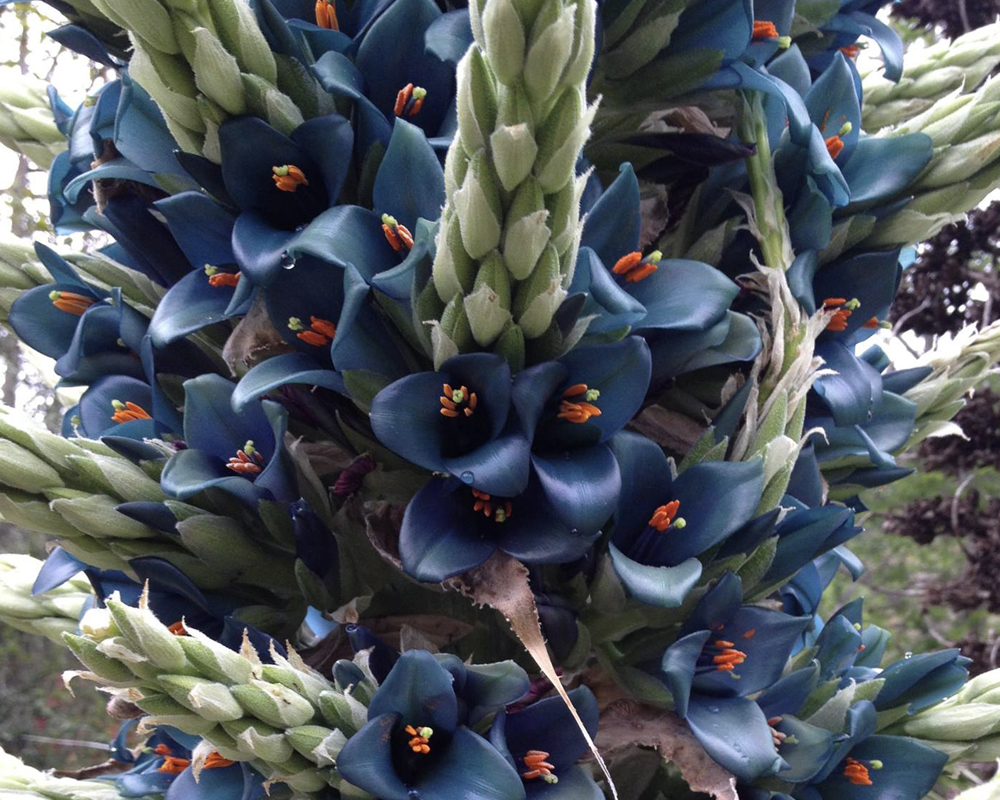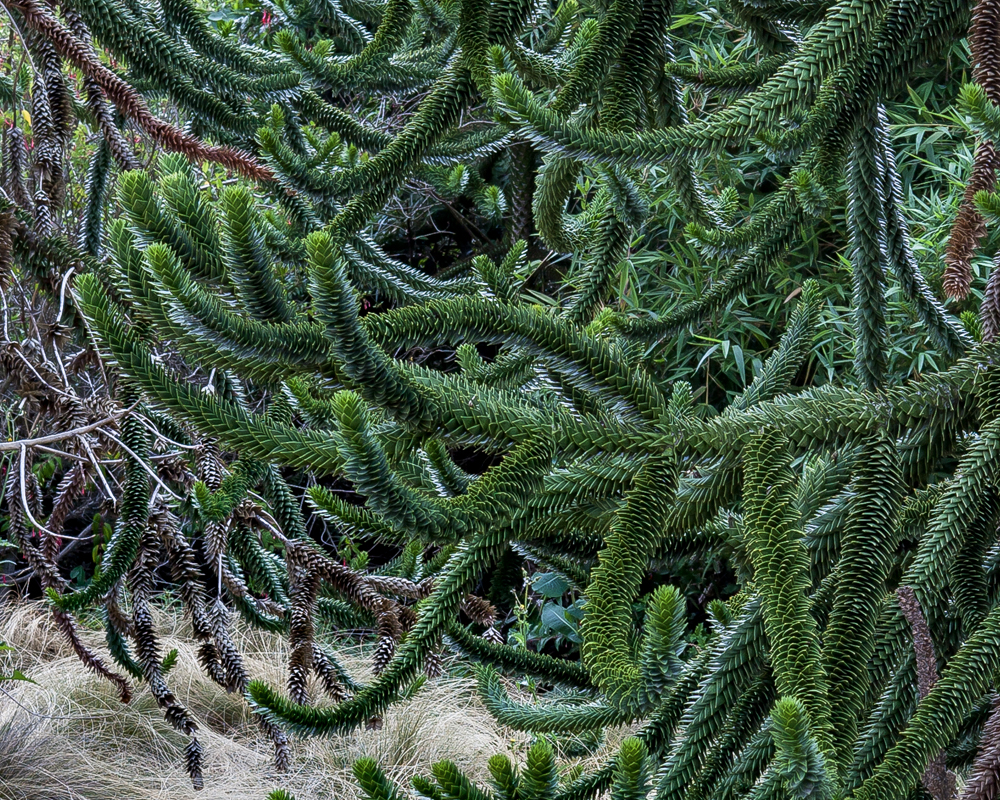
South America
South America’s landscape—from its gently rolling pampas to its primordial rainforests—derives from its diversity of climate and terrain.
Here, this flora is displayed in twenty-five beds and on nearly two acres, including exquisite flowers, rare plants, and several examples of the unusual monkey puzzle tree (Araucaria araucana).
Regions and History
Our South American Area represents the flora of the Mediterranean-climate and temperate areas of South America, featuring plants from the matorral (shrublands or thickets of bushes) of coastal Chile. The South American matorral is comparable to the chaparral of California and the maquis vegetation of the Mediterranean Basin, all characterized by drought-tolerant shrubs with small leathery leaves.
The Garden sponsored several botanical expeditions to the Andes between 1935 and 1964 in support of research and collection development. Many of those expedition plants form the basis for this collection, as well as plants collected by former director Dr. Robert Ornduff in Chile in 1983.
A new partnership with the University of Santiago is continuing our commitment to expanding the South America Collection.
Collection Highlights
Common plants of the matorral include olivillo (Kageneckia) and soapbark tree (Quillaja), as well as terrestrial bromeliads (Puya). The Garden’s collection of puya is large and still expanding with new plantings being developed. Every year the puya collection attracts hundreds of visitors to see the vivid colors of this genus, including deep violet, chartreuse green, and bright turquoise.
This area also features a young grove of monkey puzzle trees, the dominant canopy tree in a threatened forest eco-region. They’re hard to miss, with their intricate, scaly branches and trunk. Native to the high volcanic slopes of the southern Andes of Argentina and Chile, these trees were grown from seeds that Dr. Ornduff collected in Chile’s Parque Nacional Nahuelbuta in 1983. They can live for more than 1,000 years, taking up to 20 years to produce seeds. Mature monkey puzzle trees can grow up to 49 meters (160 feet) tall, and will ultimately shed their lower branches, revealing a thick trunk topped by an umbrella-shaped canopy.
Other plants of horticultural importance include Fuchsia magellanica, used extensively for breeding Fuchsia hybrids; Alstroemeria, common in the florist trade; and Chilean bellflower or copihue (Lapageria rosea), the national flower of Chile.
Banner: Vachellia caven by Saxon Holt

